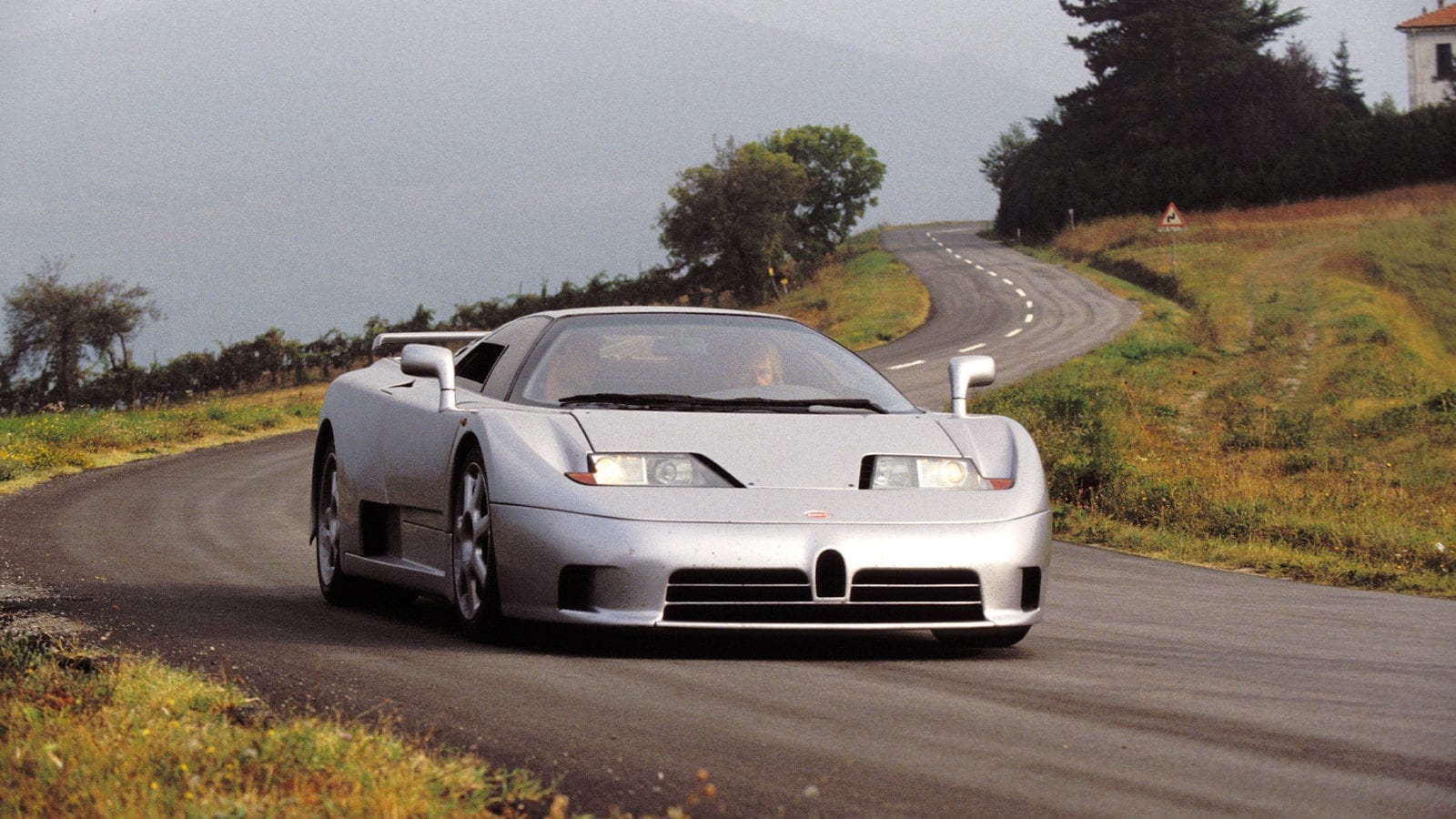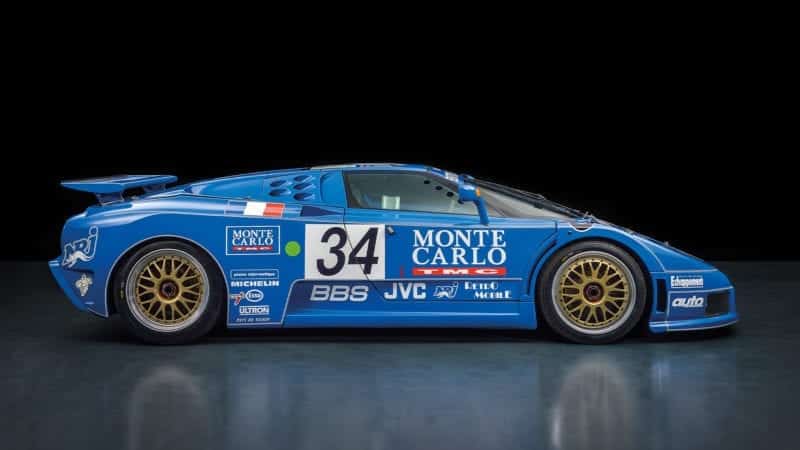Road car buying guide: Bugatti EB110
A rarity that divides opinion, but the Bugatti EB110 is an Franco-Italian mash-up was the first to resurrect the historic marque

The dream of Italian importer and dealer Romano Artioli was to create the ultimate supercar, but the timing couldn't have been worse
This could be the forgotten hero of 1990s supercars. And before you judge, just consider the facts. Launched in the same era that gave us such automotive exotica as the McLaren F1, Ferrari F40, Lamborghini Diablo and Jaguar XJ220, the Bugatti EB110 hardly stood a chance in the bedroom wall poster contest, with its boss-eyed front-end, slab sides and stubby rear. And then there was its price tag. In 1991 you’d have to fork out a whopping £285,500 for one. That’s about £100,000 more than an F40 at the time. Big money, then.
Plus, what badge did it wear? Did the name Bugatti hold much sway against the established big-hitters any more? Back in the 1930s it did. But Bugatti had been long defunct after the death of founder Ettore Bugatti in 1947 forced the company to wind up in the early ’50s.
So what on earth was it doing back? And just to add insult to injury, it wasn’t even technically French. It was now Italian. Funded, built and sold out of Campogalliano, Modena. Surely the EB110 had just about every roadblock to desirability laid out in front of it. Yet fast forward some 30 years and Bugatti is well and truly back at the top of the tree after its Veyron and Chiron success stories. But neither of those would have happened were it not for one Italian’s gamble.
Ferrari dealer Romano Artioli already knew all about Bugatti’s history and had his own personal collection of its classic cars before deciding to buy the rights to the name and establish Bugatti Automobili SpA in 1987.
Work on a new model began immediately, but not everything went smoothly. Artioli recruited the same chassis design team that created the Miura platform for Lamborghini, and they set about penning an aluminium honeycomb design and instructed Marcello Gandini of Bertone to clothe it. Artioli was unimpressed by the early cars and after numerous ‘creative differences’ the chassis team left, as did Gandini, and a new team was assembled, headed by Aérospatiale with the design tweaked by Giampaolo Benedini – an architect by trade, rather than a car designer. Out went the aluminium, in came a full carbon chassis, setting the project back hugely.
Eventually, the EB110 was unveiled on September 15, 1991, a full four years after its conception, on a date which coincided with what would have been Ettore Bugatti’s 110th birthday, lending the car its EB110 designation.

Ugly, possibly, but the EB110 set an engineering precedent that would be followed by future Bugattis
But what was special about this ‘new’ Bugatti? Let’s start with the engine. Bugatti opted to buck the trend of big-capacity turbocharged units, and developed a 3.5-litre V12, boosted by four small turbos. The logic was that four smaller fans spooled much faster than two big ones, reducing turbo lag. It had quite some effect. The EB110 had 555bhp, weighed 1600kg, had four-wheel drive and could hit 213mph. Sound familiar? That’s because even the Bugattis of today stick to largely the same multiple-turbo engine, all-wheel-drive formula created for the EB110.
Soon Bugatti went even better, creating a limited run of Super Sport variants, which each boasted 612bhp, could hit 62mph in just over three seconds and nudge a tad above 220mph. For the time, those are some scary numbers.
The EB110 was usable, too. The interior was luxurious, using the finest leathers and woods, and with the turbos muted it was comfortable and easy to drive. And it went racing. Two cars were built, one for Le Mans in 1994 and one headed across the Atlantic to IMSA, but neither fared well.

After a 55-year wait, in 1994 Bugatti returned to Le Mans. A tyre failure proved the undoing of the EB110 SS
Sadly, the glory didn’t last. Around 130 EB110s were delivered before Bugatti was bankrupted by a combination of recession and Artioli’s over-ambitious EB112 saloon concept, together with his purchase of Lotus Cars – he’d go on to name the Elise after his granddaughter – and Bugatti shut its doors for a second time.
That wasn’t the end of the story, as ex-employees combined to buy the remaining half-finished chassis, spawning spin-offs, such as the madcap B-Engineering Edonis and the German Dauer EB110.
Then, after a second period of stagnation, along came Volkswagen in 1998 with a dream to build the ultimate Bugatti, elevating the brand back to the pinnacle of automotive engineering in the process. But there’s no understating the role the short-lived EB110 played in the history of one of the world’s great automakers.
Bugatti EB110
- Price new £285,500
- Price now £700,000-£1.5m
- Engine 3.5-litre quad turbo V12
- Rivals Ferrari F40, Lamborghini Diablo, Jaguar XJ220
- Verdict A largely forgotten milestone in Bugatti’s rich, if disrupted, history
